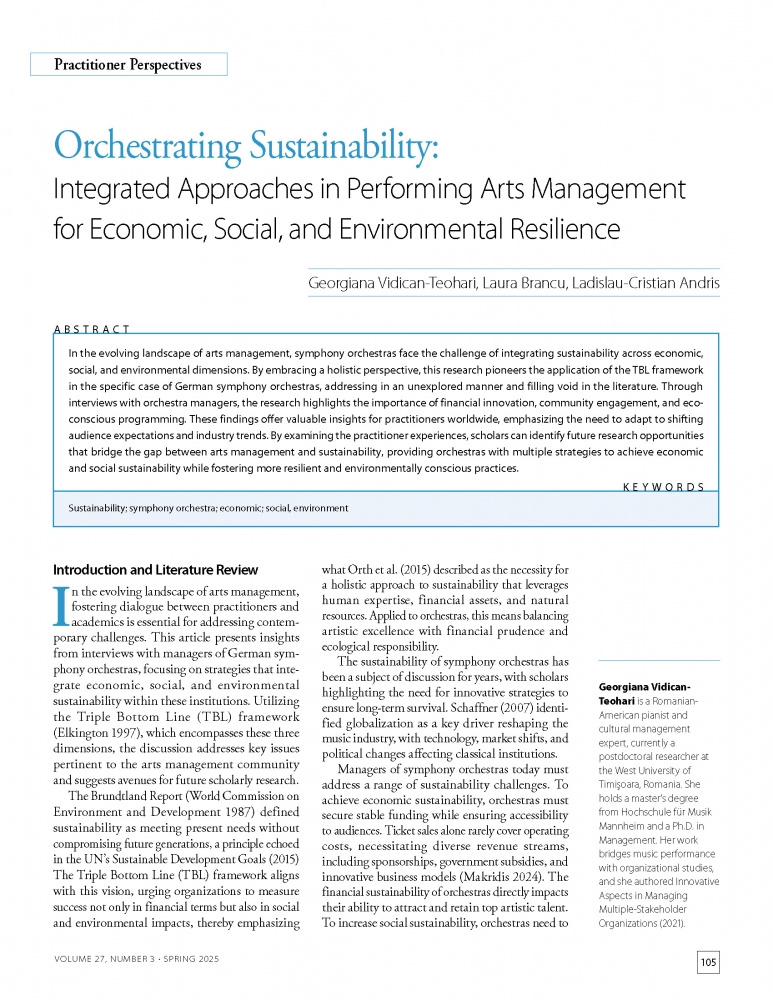Orchestrating Sustainability: Integrated Approaches in Performing Arts Management for Economic, Social, and Environmental Resilience
Product: Article
$21.00 CA
Georgiana Vidican-Teohari, Laura Brancu, Ladislau-Cristian Andris
Georgiana Vidican-Teohari is a Romanian-American pianist and cultural management expert, currently a postdoctoral researcher at the West University of Timișoara, Romania. She holds a master’s degree from Hochschule für Musik Mannheim and a Ph.D. in Management. Her work bridges music performance with organizational studies, and she authored Innovative Aspects in Managing Multiple-Stakeholder Organizations (2021).
Laura Brancu is an Associate Professor at the West University of Timișoara, with a background as a classical pianist. Dr. Laura Brancu is Cultural Intelligence (CQ) Certified Facilitator by Cultural Intelligence Center, Michigan, US, and member of International Association of Cross-Cultural Competence and Management. She published comparative studies and articles in cultural intelligence, entrepreneurship, expatriates and foreign direct investment.
Ladislau-Cristian Andris, a Romanian-Swiss musician, is an Associate Professor Doctor Habilitated at the West University of Timișoara, Romania. He is the Dean of the Faculty of Music and Theater (WUT), PhD coordinator and post-doctoral mentor, viola and chamber music professor. Dr. Andris is principal viola musician of the Swiss Orchestra, and of the Romanian Chamber Orchestra.
ABSTRACT
In the evolving landscape of arts management, symphony orchestras face the challenge of integrating sustainability across economic, social, and environmental dimensions. By embracing a holistic perspective, this research pioneers the application of the TBL framework in the specific case of German symphony orchestras, addressing in an unexplored manner and filling void in the literature. Through interviews with orchestra managers, the research highlights the importance of financial innovation, community engagement, and eco-conscious programming. These findings offer valuable insights for practitioners worldwide, emphasizing the need to adapt to shifting audience expectations and industry trends. By examining the practitioner experiences, scholars can identify future research opportunities that bridge the gap between arts management and sustainability, providing orchestras with multiple strategies to achieve economic and social sustainability while fostering more resilient and environmentally conscious practices.
KEYWORDS
Sustainability; symphony orchestra; economic; social, environment
